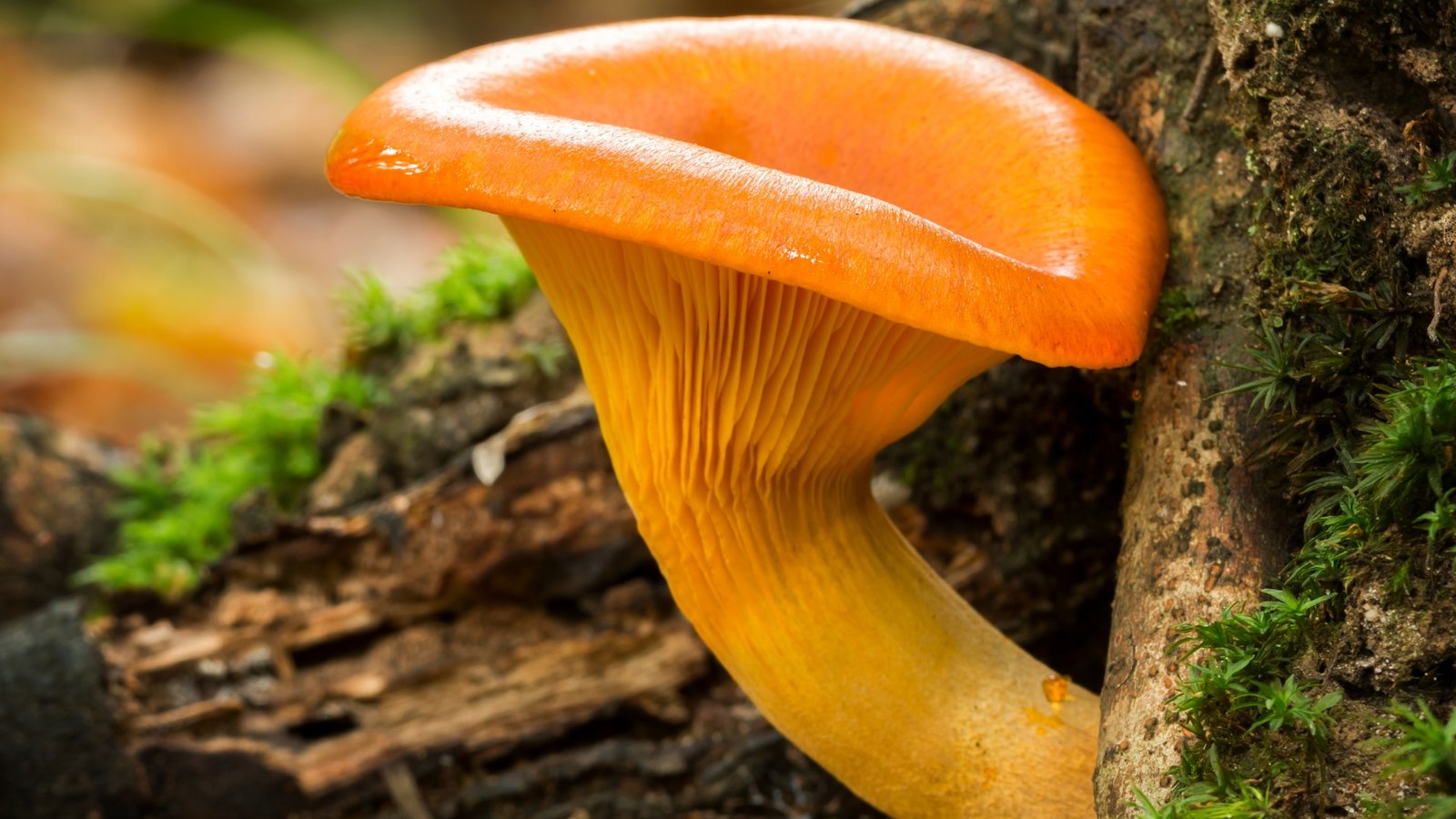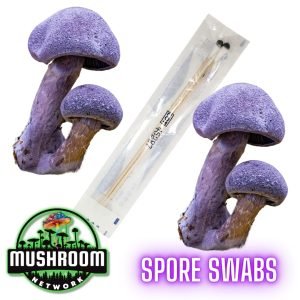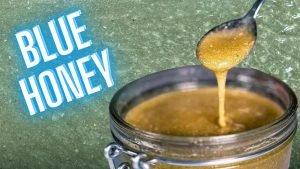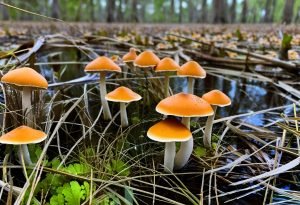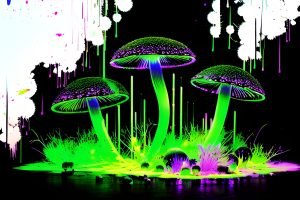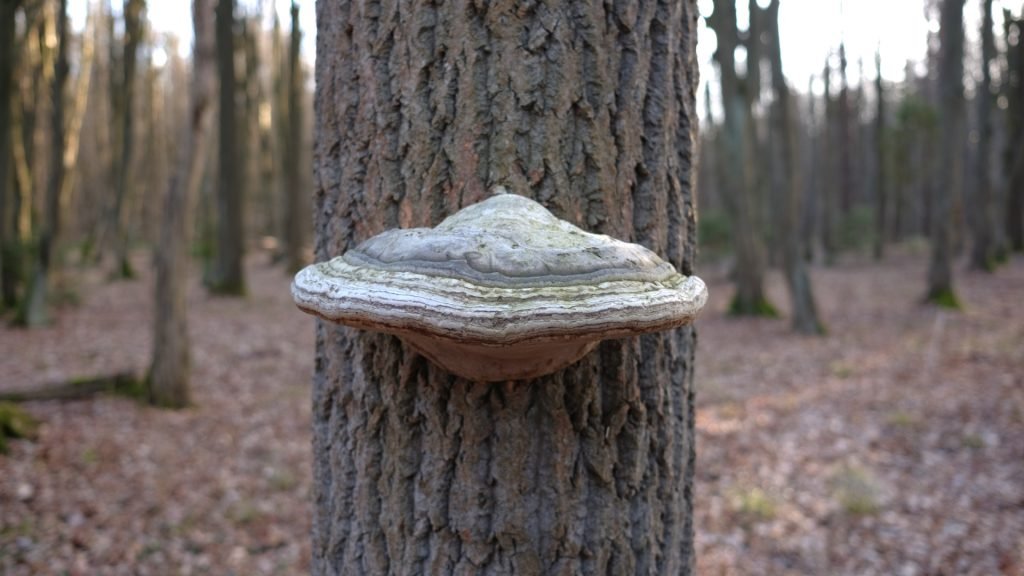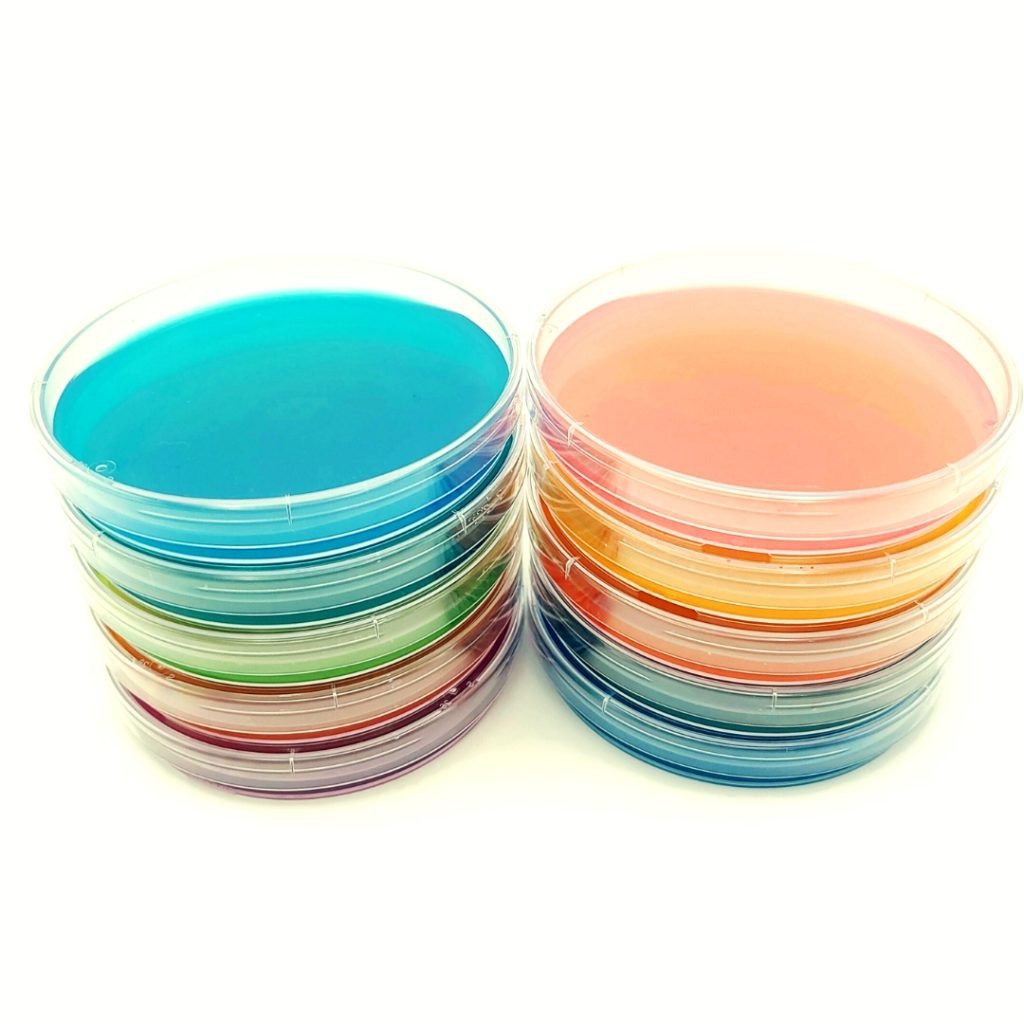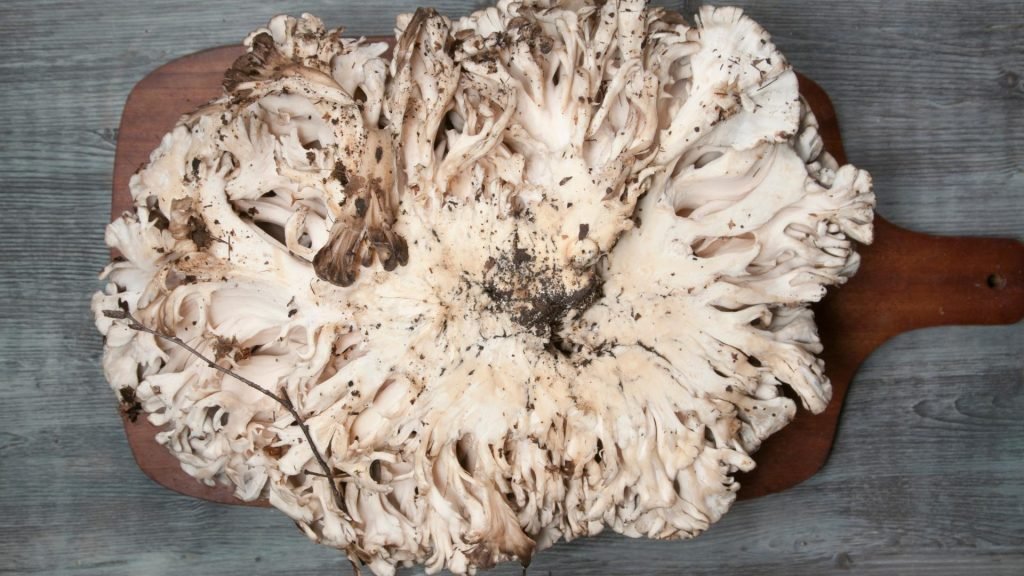In the enchanting realm of mycology, a few species stand out not just for their own individual charm, but for their uncanny resemblance to others. Among these are the Jack-O’-Lantern mushroom (Omphalotus Olearius) and its close relative, the Eastern Jack-O’-Lantern mushroom (Omphalotus Illudens). Their captivating glow and close resemblance make them the focus of many a discussion, yet they are not to be mistaken as one and the same.
The Luminescent Doppelgangers Unveiled:
Both species belong to the Omphalotus genus and share a striking resemblance in appearance. This similarity often leads to misidentification, which can be concerning given their toxic nature. Beyond their shared toxicity and bioluminescent properties, a deeper dive into their characteristics sheds light on both their parallels and divergences.
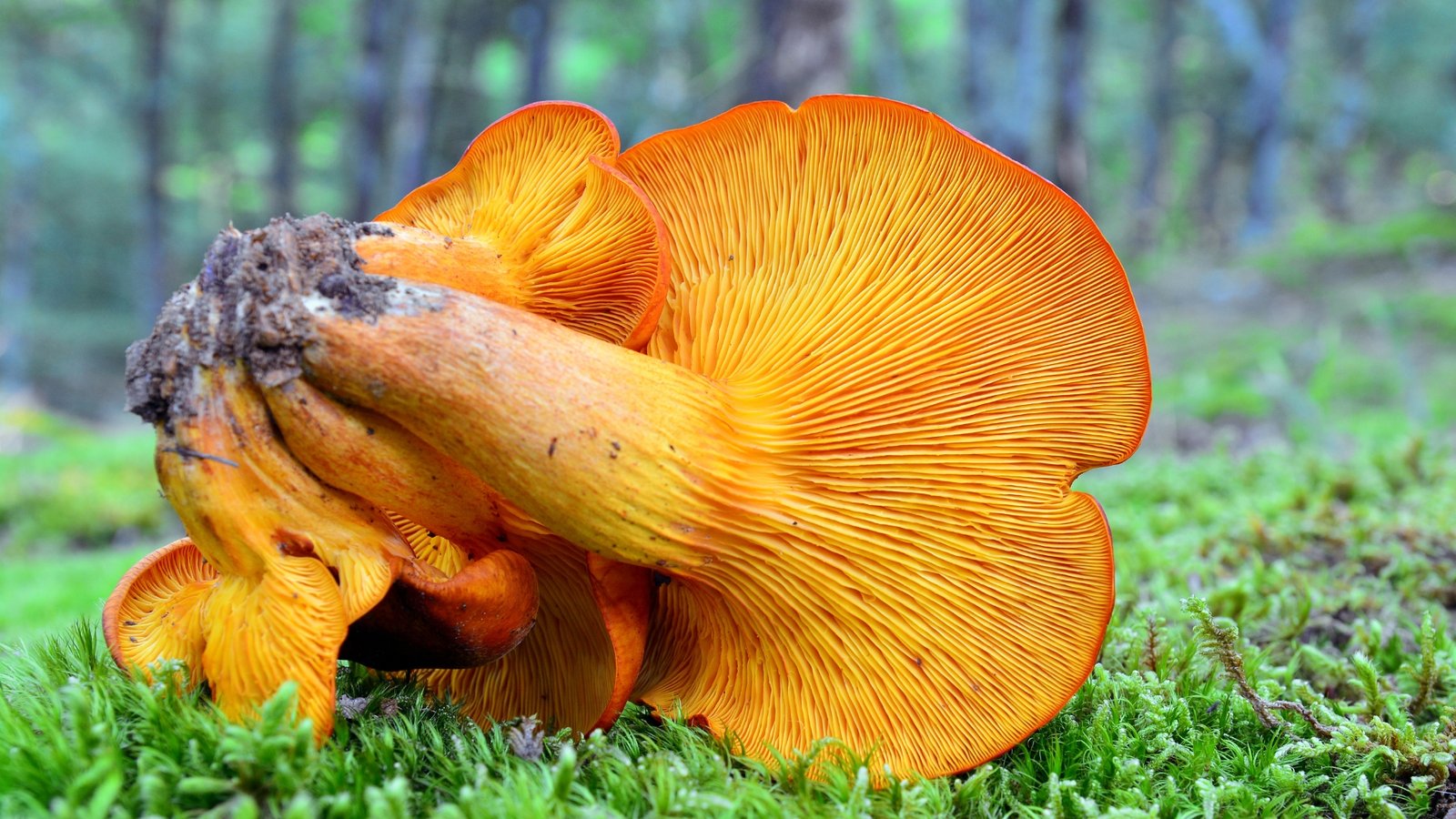
The Radiant Glow and Its Role:
- Bioluminescence – Nature’s Nightlight: Both the Omphalotus Olearius and Omphalotus Illudens emit a soft, eerie green glow from their gills. This bioluminescence is believed to attract insects which can help in the dispersal of their spores.
- Why the Glow? The exact evolutionary reason for this luminescence remains a topic of research and speculation. Some theories suggest it might deter herbivores or serve as a form of defense.
- Toxicity Tied to Luminescence? It’s worth noting that both species are toxic. While their glow lures in the curious, consumption can lead to severe gastrointestinal distress. This duality of allure and danger is a hallmark of many mushrooms, with the luminescence acting as both an attractant and a potential warning.
Anatomical and Ecological Differences:
- Substrate Preference: The O. Olearius typically grows on hardwoods, especially oak, in Southern Europe. In contrast, O. Illudens is primarily found on decaying hardwood stumps and logs in North America.
- Cap Variation: The Eastern Jack-O’-Lantern, O. Illudens, often sports a brighter orange cap, whereas the O. Olearius is usually more yellowish-orange.
- Growth Pattern: The O. Illudens mushrooms often appear in large clusters, giving the appearance of a bouquet, while the O. Olearius might grow in smaller groupings or even singly.
The universe of mushrooms is expansive, each variant bearing its own unique charm and characteristics. The Marketplace on the 🍄 Mushroom Network is a testament to this diversity. It is a haven for those seeking a deeper understanding of the magical world of mushrooms. If you’re keen on learning more about this type of mushroom and other mushroom variants, this Marketplace is your ultimate resource.
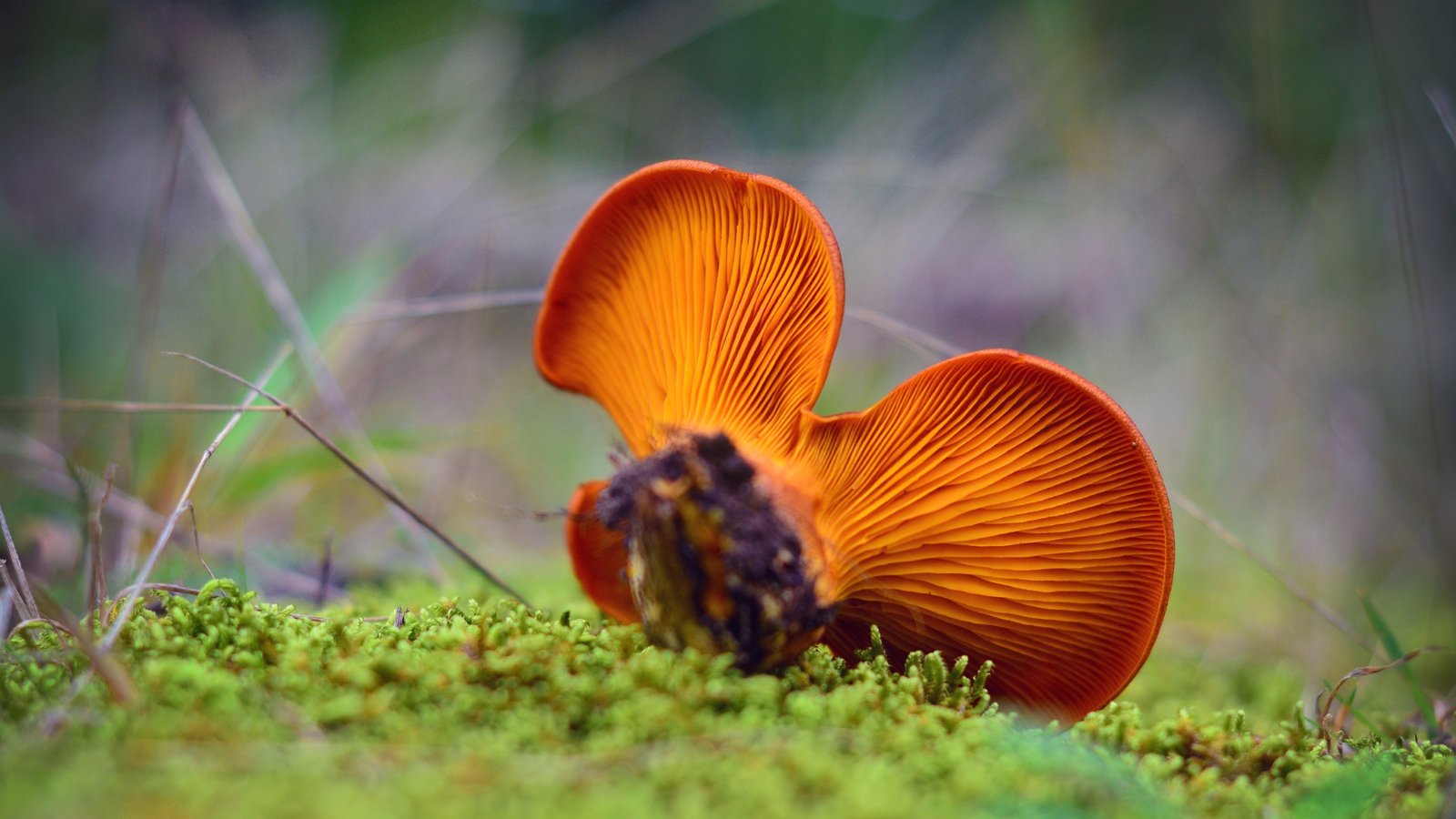
Historical and Cultural Significance:
- Legends of Glowing Mushrooms: Luminescent mushrooms, like the Jack-o’-lanterns, have been the subject of folklore for centuries. Their eerie glow has been linked to supernatural stories of wandering spirits and forest magic.
- Medical Potential: Despite their known toxicity, research is ongoing into the compounds within these fungi. Some studies suggest potential antimicrobial properties, though their medicinal value remains largely uncharted.
- The Art of Identification: For mycologists and foragers, the close resemblance between these two species – and indeed with other edible mushrooms – underscores the importance of meticulous identification. A mistake can have serious health implications.
Not sure where to start? The 🍄 Mushroom Academy offers a wide range of courses tailored to your needs. Whether you’re a beginner eager to learn or an experienced mycologist looking to broaden your knowledge, the 🍄 Academy has something for everyone.
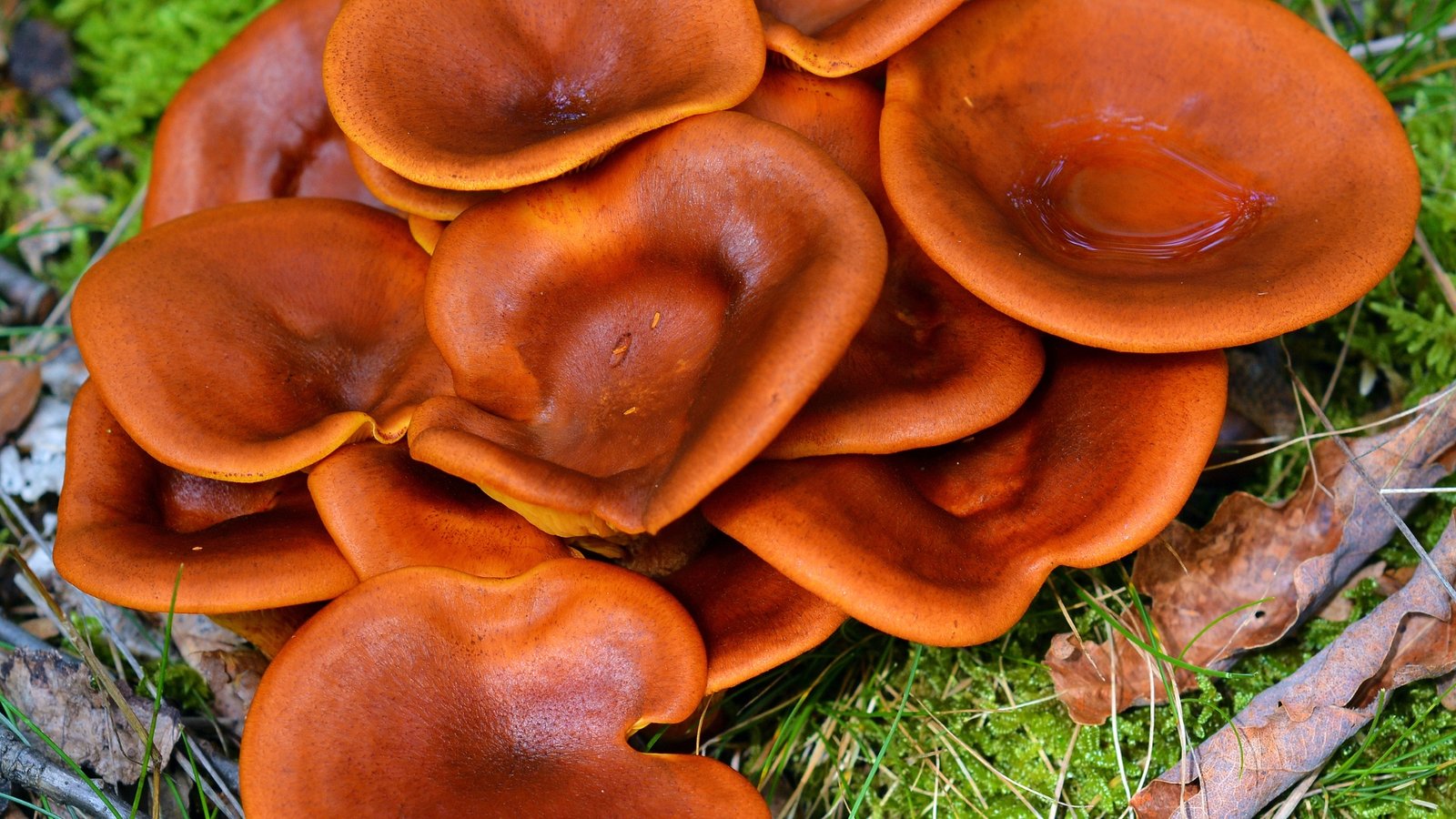
Forest Floor Finale:
Understanding the intricacies between these two mushrooms isn’t merely an exercise in academic distinction. It’s a celebration of nature’s complexity and its penchant for both replication and variation. As we uncover the secrets of the forest floor, we’re reminded that even in the shadows, there are stories waiting to be illuminated.
Don’t forget to check out the 🍄 Mushroom Network’s Marketplace to see what’s available. But hurry, our shelves are constantly evolving, and you wouldn’t want to miss out on this wonderful mushroom. Join our growing network of Patrons, Genetics, and Mycologist Vendors only on the 🍄 Mushroom Network!
Recommended Reads:
The Ancient Alchemy of Blue Honey: Magic Mushrooms Meet the Nectar of Bees
About This Article: Ever stumbled upon honey with an enigmatic deep blue hue? This isn’t...
Read More...Swamps and Spores: A Glimpse into Florida’s Fungal Diversity
About This Article: Dive deep into Florida’s mycological marvels with ‘Swamps and Spores’. 🍄🌲 From...
Read More...Blue Meanies (Panaeolus Copelandia Cyanescens)
Welcome, fellow mycophiles and curious minds, to the enchanting world of Blue Meanies! As we...
Read More...Mushroom Magic: Exploring the Cultural Impact of Psychedelic Fungi
Psychedelic mushrooms, also known as magic mushrooms, have had a profound and multifaceted impact on...
Read More...Whoa there, Spore Sport! 🍄 Looks like you’re not logged in yet. Don’t you know what you’re missing? MYCO-CREDITS! Imagine all the fungal fun you could have. It’s like finding a Morel in May and not picking it. Tragic, right? Log In or Become a Myco-Patron and start racking up those credits. It’s more rewarding than finding a mushroom in your backyard! 🌟🏡

